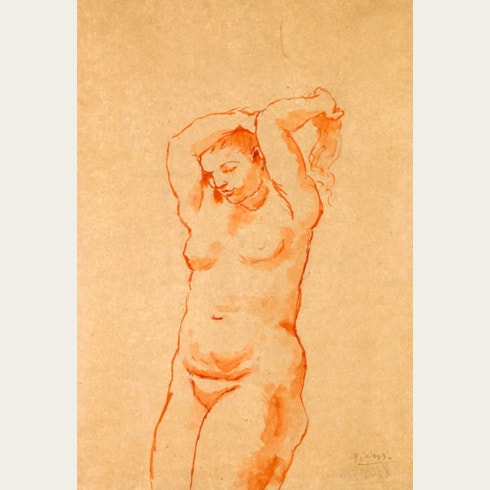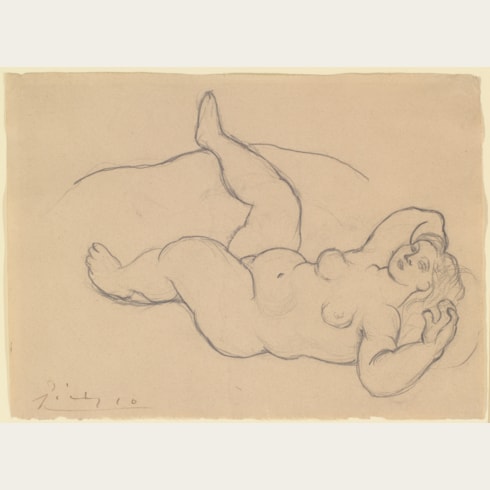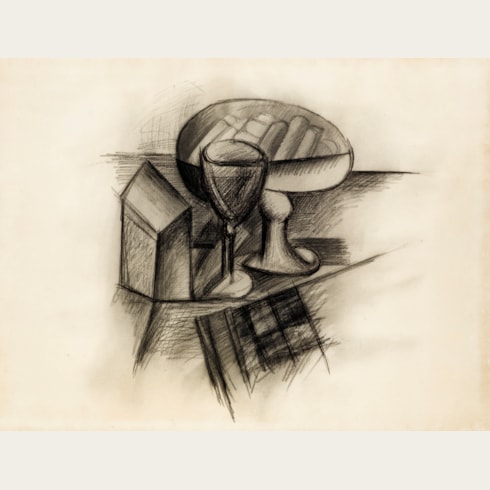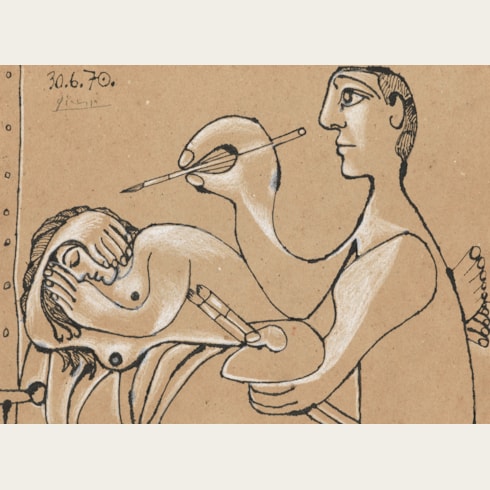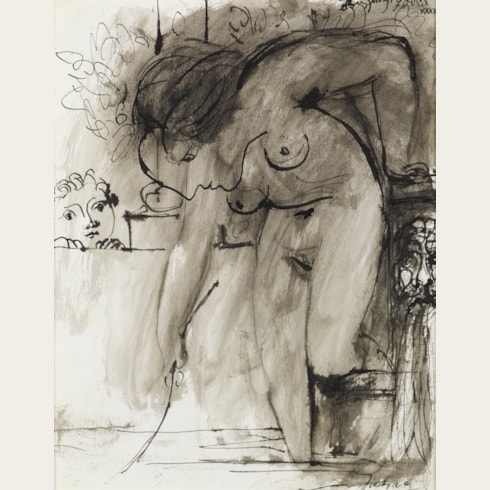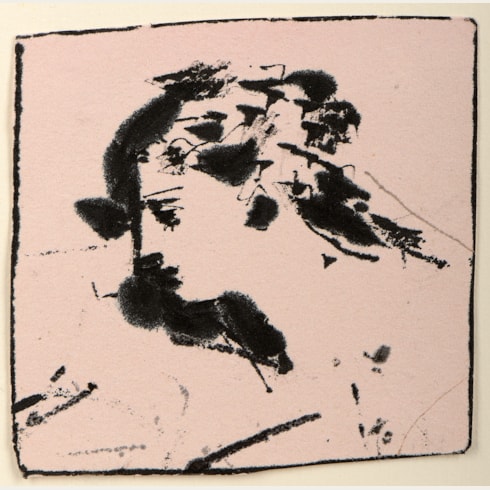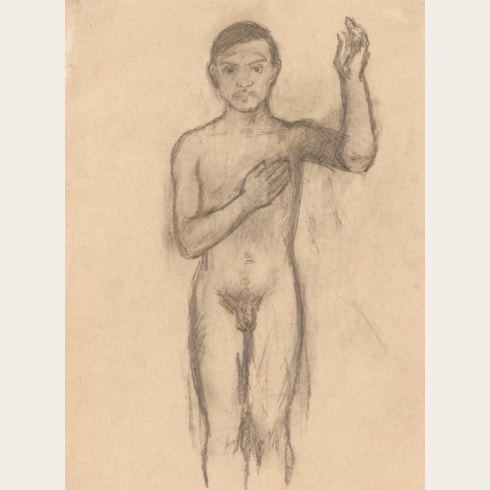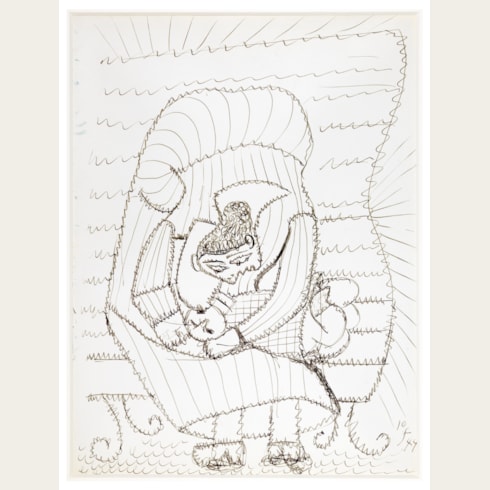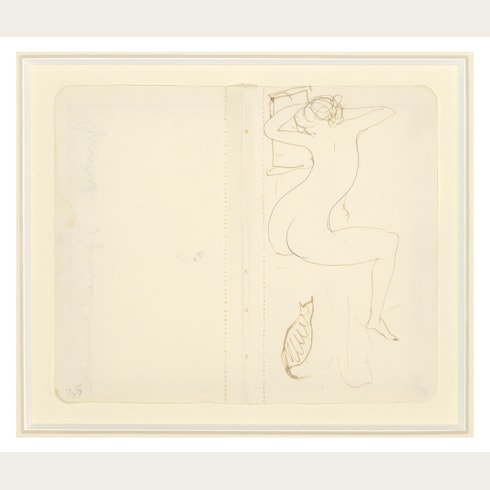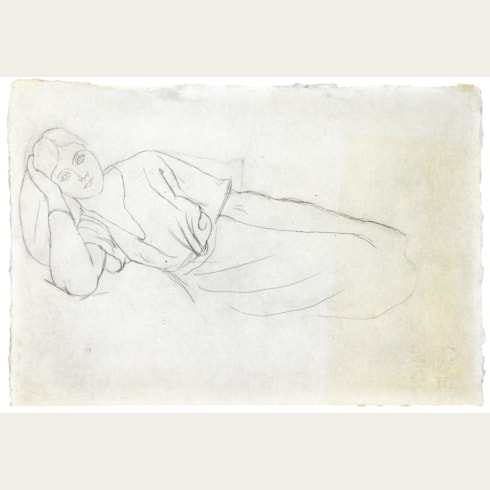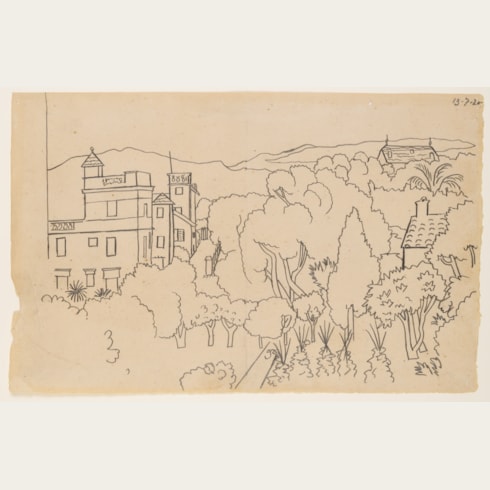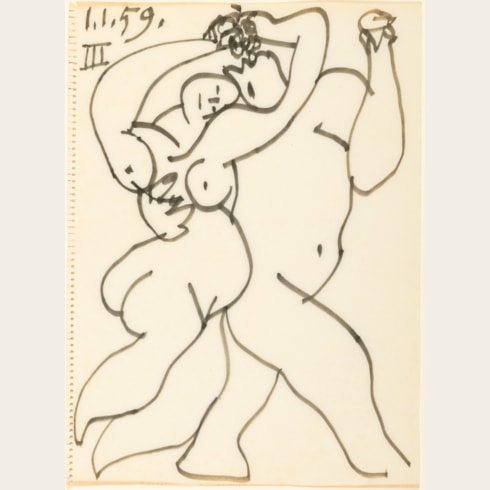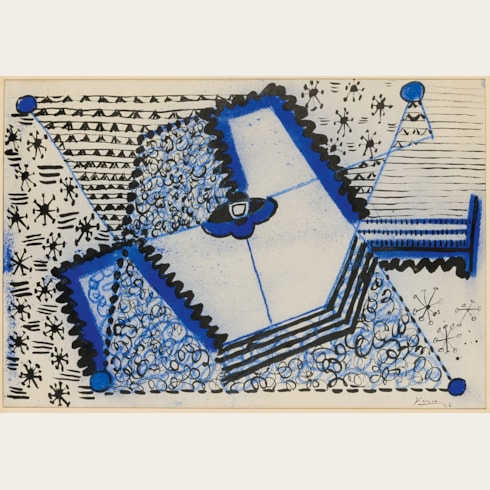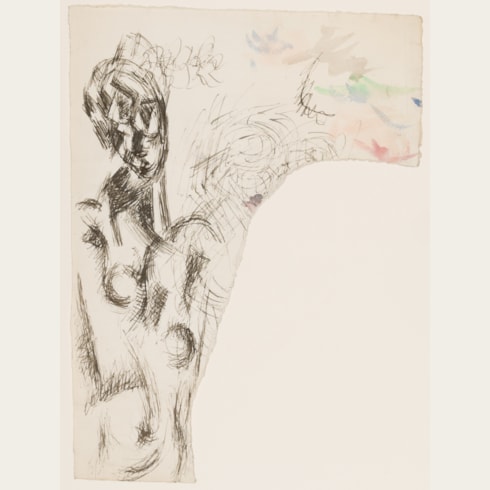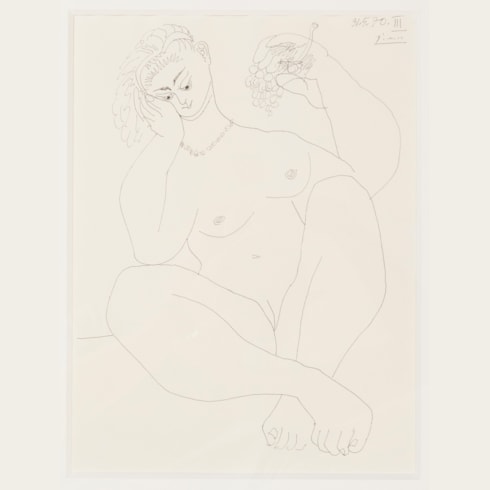Pablo PICASSO
(Malaga 1881 - Mougins 1973)
Picasso II
Numbered II in pencil at the upper right.
210 x 269 mm. (8 1/4 x 10 5/8 in.)
Parmelin begins her book by stating that ‘I have had the good fortune, the priceless experience of being alone for hours in Picasso’s studios at Mougins, entirely caught up in all those things which were entering my mind, invading it from all sides, without having to speak to anyone, without having to put my spontaneous feelings into words, without those awkward moments when you feel obliged to say something – whether right or wrong – to a painter as he shows you his canvases. For hours I was alone in those studios, exalted, moved as I had never been before, finding myself entirely on my own, my thoughts free to swim wherever and however they liked in the ocean of his thoughts.’
Picasso’s time in Cannes and Mougins, from 1954 until his death, were some of the most productive years of his career. As Parmelin describes one of her visits to Mougins, ‘Picasso, Jacqueline, and I had spent the last hour in the top studio at Mougins, looking at all the paintings of women assembled there – the Women of Mougins – looking at them one by one, in groups of four or five at a time, closing our eyes to all the other works…In Picasso’s mind, the works in this book are intended to express, in their own way, the living truth of his work: that is to say the work in progress, the thousand works in progress in all materials, the studios quite bare, quite full, as they are around him when he is working. They are what he calls the “intimate secrets of a studio.”’
This drawing, reproduced and printed on the cloth cover (though not the dust jacket) of Les Dames de Mougins, is one of nineteen versions of Picasso’s name, all drawn by the artist in coloured crayons, that were conceptualized for the project, and were later in the collection of the publisher Charles Feld. Throughout the book, each section of text begins with a letter drawn by Picasso, which he also created specifically for this project. As Feld writes in an endnote to Les Dames de Mougins, ‘The colored initial letters in this book were created by Picasso especially for this purpose. When approached by the French co-publisher, the painter laughingly said that it was so long since he had written out an alphabet that he had forgotten how. With colored chalks he set about creating the “Picasso alphabet” - but, as the reader can see, he forgot the E and supplied two K’s. When this was pointed out, he made a sheet of E’s and said, “There, if you want E, I give you E.”’.
The present sheet was one of several drawings by Picasso belonging to Charles Feld, who established a publishing house, Éditions du Cercle d’Art, in Paris in 1950. Dedicated to high quality art books, Éditions du Cercle d’Art produced some twenty books illustrated by Picasso, who became a close friend of Feld for many years. Picasso’s first book for Feld was La Guerre et la Paix, which was published in 1954, with Les cahiers de la Californie appearing the following year and Les Ménines de la vie in 1958. During the 1960s Feld’s Éditions du Cercle d’Art published a dozen books devoted to Picasso, including Hélène Parmelin’s Les Dames de Mougins (1964), Le Peintre et son modèle (1965) and Notre Dame de Vie (1966), as well as two books on the artist by Douglas Cooper and Luis Miguel Dominguin’s Toros y Toreros (1961) and Louis Aragon’s Shakespeare (1965), both illustrated with drawings by Picasso.
In an essay accompanying a book of Picasso’s drawings of the period 1966-1968, published by Éditions du Cercle d’Art in 1969, Charles Feld wrote of the artist that, ‘He creates his own visual reality out of his thoughts and feelings. His art expresses the experiences and impressions that have touched and influenced his life. Thus, comic and tragic aspects of the world exist in his oeuvre side by side, heightened by the sureness and lightness of touch that he brings to his drawings.’
The present sheet is sold with a copy of the first edition of the English translation of Les Dames de Mougins, entitled Picasso: Women. Cannes and Mougins 1954-1963, published by Éditions du Cercle d’Art in 1965.
‘I do not know if I am a great painter, but I am a great draughtsman.’ (Picasso to Max Jacob).
Provenance
His sale, Cheverny, Château de Cheverny, 15 May 1995, lot 595
Jacques Grange, Paris.
Literature





